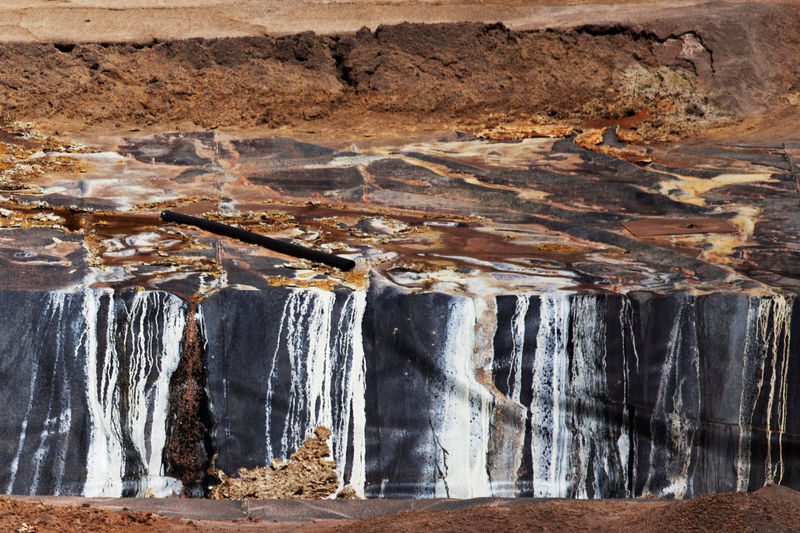By Clyde Russell
LAUNCESTON, Australia, Sept 3 (Reuters) - One of the surprise packets in the commodity space this year has been uranium, with the spot price surging 30 percent in the past four months, a stellar performance that may not be justified by current fundamentals.
Uranium UXXc1 stood at $26 per pound on Aug. 31, up from the low so far this year of $20, hit in mid-April. The year-to-date gain is 16.6 percent, and the metal used to power nuclear reactors is on track to record a second annual increase.
This looks like a strong performance on the surface, but uranium isn't quite like other commodity markets and it's worth delving down to try and fathom the underlying dynamics.
The most obvious factor driving the spot price has been supply cutbacks by major producers, namely Canada's Cameco CCO.TO and Kazakhstan's state-owned producer Kazatomprom KZTPR.UL .
Cameco said in July it would extend indefinitely a shutdown of its McArthur River and Key Lake mines in Saskatchewan province, having initially announced a suspension of operations in November last year.
Kazatomprom also said at the end of last year that it would reduce its output by 20 percent for three years starting from the beginning of 2018, as it battled a market that has been oversupplied since the nuclear shutdowns in the wake of the 2011 Fukushima disaster in Japan.
The Cameco and Kazatomprom cutbacks took about 16.5 percent of annual uranium ore supply from the market, but the price action in the wake of the cutbacks is instructive.
The spot price took off after Cameco's November announcement, jumping from $20 per pound to a high of $26 by Dec. 4, a date that coincided with the news of the Kazatomprom production curbs.
Once the initial surge was over, however, spot uranium drifted back down to the April low of $20 per pound, the same level it was before the output cuts were announced.
It did recover somewhat thereafter, and got another shot in the arm with Cameco extending the idling of its major mines indefinitely in July.
But it does appear the uranium price has been driven by the news flow, and may struggle to sustain a rally.
EQUITIES OVERBLOWN?
It's also the case that rallies built on supply cuts are rarely as enduring as those prompted by increases in demand.
If the price of spot uranium does rise to around $70 a pound, as some analysts forecast, it's likely that Cameco and Kazatomprom will simply increase output from their idled mines.
But is there a positive demand case to be made for uranium?
The news headlines in recent years have tended to focus on the negatives, such as the closure of Japan's and Germany's reactors after Fukushima, and the cost blowouts and delays on several new power plants.
Almost quietly, though, substantial nuclear capacity is being added in China and elsewhere in Asia.
Data from the World Nuclear Association shows that 55 reactors with a capacity of 55 gigawatts (GW) are now under construction, which compares favourably to 455 operating reactors that produce around 400 GW annually.
Of the plants being built, China is leading with 12.85 GW under construction, followed by the United Arab Emirates, South Korea, India and Russia.
It is worth noting that, apart from South Korea, the countries expanding their capacity have far less organised public opposition to the use of nuclear energy than countries where activists are pushing for an end to the use of the radioactive form of power generation.
China is pushing nuclear power as part of its efforts to lessen reliance on polluting coal-fired generation, notwithstanding the issues surrounding the long-term safe storage of spent fuel rods.
The data does point to solid growth in demand for uranium for new power plants, but this increase will be gradual and probably can be met from existing mining operations.
This means that uranium producers, some of whom have enjoyed strong rallies in tandem with the spot price, may be reaching overvalued territory.
Shares in Paladin Energy PDN.AX , the Australian producer operating mines in Africa, have gained 77.2 percent since a recent low on May 15, and explorer Boss Resources BOE.AX has watched its stock prices jump 105 percent since March 21.
These gains look overcooked, and Paladin and Boss aren't the only players in the uranium space that have enjoyed rallies that appear somewhat disconnected to fundamentals.
Even Cameco, which in effect has become a much smaller uranium producer, has seen its share price improve with a gain of 53 percent between November last year and a recent closing peak of C$15.85 in June.
But Cameco has failed to maintain those gains, and its share price has eased back to C$13.56 on Aug. 31.
This perhaps just goes to show that sustained rallies cannot be built by removing supply from an oversupplied market.
The opinions expressed here are those of the author, a columnist for Reuters.
